Titles
Jock & Rorie - Tales of Scottish Soldiers
YANKEE DOODLE DRUMMER BOY
One of the oddest sights of the Indian Mutiny must have been a 12-year-old drummer boy from the 93rd Sutherland Highlanders clinging to the dome of the highest mosque in Lucknow in November 1857 singing “Yankee Doodle Dandy” at the top of his voice. Drummer Ross had been ordered to climb up the mosque’s minaret with his bugle to let the besieged garrison on the outskirts of city know that rescue was at hand. Alerted by sounding the regimental call on Ross's bugle, the rebel troops opened fire with their cannons on the minaret and the boy was ordered to climb down. But half-way down Ross changed his mind and climbed back up again. He sounded “Cock of the North” on his bugle and then sang “Yankee Doodle Dandy” before finally coming down again. He was afterwards questioned by the regiment’s Lieutenant William Macbean about his behaviour. "You know Sir, I was born when the regiment was in Canada when my mother was on a visit to the States, and I could not have come down until I sang “Yankee Doodle Dandy”, to make my American cousins envious when they hear the deeds of the Ninety-third,” the boy explained.
Next Week - SELL ME YOUR HIGHLANDERS
Quick Guide to the Scottish Regiments
To keep things simple, I've decided to base the following on the regular Scottish regiments as they were at the time of the Second World War.
But first -
Scottish Regiments at Waterloo - The Royal Scots Greys, the Scots Guards, the Royal Scots, the Highland Light Infantry, the 73rd Foot (later 2nd Black Watch), the Black Watch, the Cameron Highlanders and the Gordon Highlanders. The 91st Foot (later 1st Argyll and Sutherland Highlanders) were guarding one of the flanks and did not take part in the fighting.
Scottish Regiments in the Crimean War - The Royal Scots Greys, the Scots Guards, the Royal Scots, the Royal Scots Fusiliers, the Black Watch, the Highland Light Infantry, the 72nd Duke of Albany's Highlanders, the Cameron Highlanders, the 93rd Sutherland Highlanders and 90th Perthshire Light Infantry. The Gordon Highlanders arrived days after the capture of the main Russian fortifications at Sebastapol.
Scottish Regiments in the Indian Mutiny - The Black Watch, the 71st Highland Light Infantry, the 73rd Regiment, the 74th Highlanders, the 75th Stirlingshire Regiment, the 79th Cameron Highlanders, the 92nd Gordon Highlanders, the 72nd Duke of Albany's Highlanders, the 90th Perthshire Light Infantry, the 93rd Sutherland Highlanders, the 78th Ross-shire Buffs.
Scottish Regiments in the Zulu War - Royal Scots Fusiliers, 90th Perthshire Light Infantry and 91st Argyllshire Highlanders. The Edinburgh-raised 99th Lanarkshire Regiment and the 94th Regiment, raised in Glasgow, also served against the Zulus but were shortly afterwards stripped of their Scottish associations to become battalions of the Wiltshire Regiment and the Connaught Rangers.
Scottish Regiments at Culloden - The Government troops at Culloden in 1746 included the regiments that would later be known as The Royal Scots, The King's Own Scottish Borderers and the Royal Scots Fusiliers. Loudon's Highlanders, disbanded in 1748, were also present.
Scottish Regiments in the American Revolution - The Scots Guards, the 21st Royal Scots Fusiliers, the 26th Cameronians, the 42nd Black Watch, the 71st Fraser Highlanders, the 76th MacDonald Highlanders, the 80th Edinburgh Volunteers, the 82nd Hamilton's, the 83rd Glasgow Volunteers and the 84th Royal Highland Emigrants. The last six regiments named were all disbanded at the end of the war.
Some of the regimental tartans and sporrans can be seen in Photo Identification
The Royal Scots Greys
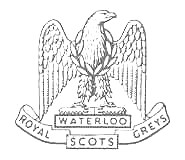
Scotland's only regular cavalry regiment. They trace their origins back to troops of horsemen raised in 1678 as the Royal Regiment of Scotch Dragoons to hunt down strict Presbyterians who revolted against attempts to impose an English-style church in Scotland. The name “Greys” was first applied because of their grey uniforms but later they were mounted on grey chargers. The regiment was also distinguished by being the only cavalry one to wear bearskin headgear. Most famous for their charge at the Battle of Waterloo (See Scottish Military Disasters Chapter 19 ; “Scotland for Ever”), the regiment also took part in the successful, but now mainly forgotten, Charge of the Heavy Brigade, during the Crimean War. The regimental headquarters is at Edinburgh Castle. In 1971 the Scots Greys were amalgamated with the 3rd Carabiniers (Prince of Wales Dragoon Guards), itself a 1920s amalgamation of two other cavalry regiments, to form the Royal Scots Dragoon Guards, now based at Leuchars in Fife.The Carabiniers had recruited in Cheshire and North Wales. The Welsh connection is recognised by Men of Harlech, arranged for the bagpipes, being one of the duty tunes played by the regimental pipe band. The officers' reputed fondness for champagne in times past once led to the regiment being nicknamed the "Bubbly Jocks". Link to Royal Scots Dragoon Guards Museum

The Scots Guards

The Scots Guards claim descent from a regiment raised in 1642 by the Duke of Argyll for service in Ireland. They became the third regiment of Foot Guards in 1661, following the Grenadier and Coldstream Guards in precedence. During the Crimean War they were known as the Scots Fusilier Guards. In 1861 it had twice as many Englishmen as Scotsmen in its ranks. The regiment recruits from throughout Scotland but still includes a large contingent of Englishmen. The regimental headquarters is in London but the regiment is presently based at Aldershot. Link to Scots Guards museum
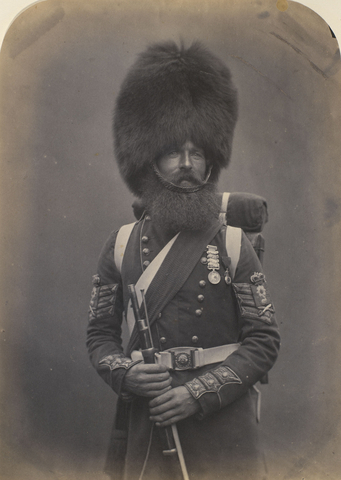
Blog
AS PROMISED - SAMPLE CHAPTER FROM SCOTTISH MILITARY DISASTERS - > Book Extract
* He was an Eighteenth Century Scottish Forrest Gump - Stobo
** Here's one that combines Canadian and Scottish themes - Tunnelling for Victory
*** Those who enjoyed reading about the Royal Scots’ Armistice Day battle with the Bolsheviks in 1918might be interested in the same fight as seen from a Canadian viewpoint - Canada’s Winter War
***** Read about the blunder that made Canada an easy target for invasion from the United States - Undefended Border
****** Read about the Second World War's Lord McHaw Haw
******* Serious questionmarks over the official version of one the British Army's most dearly held legends - The Real Mackay?
********** It's been a while since I posted a new article. This one's called Temptation
********** Read about how the most Highland of the Highland regiments during the Second World War fared in the Canadian Rockies - Drug Store Commandos.
************* We now have a Guide to Scottish military museums on this site.
************** Just weeks before the outbreak of the First World War one of Britain's most bitter enemies walked free from a Canadian jail - Dynamite Dillon
*************** Click to read - - Victoria's Royal Canadians - about one of the more unusual of the British regiments.
*************** Read an article about the Royal Scots and their desperate fight against the Bolsheviks on Armistice Day 1918 - Forgotten War A second article, looks at the same battle but through a Canadian lens .
***************No-one has got back to me with a German source for the claim that the kilties during the First World War were known as The Ladies from Hell . See My Challenge to You
***************** A map showing the old Scottish regimental recruiting districts can now be seen by clicking Recruiting Area Map .
****************** The Fighting Men 1746 article now includes the estimated strengths of the Jacobite clan regiments which marched into England in 1745 See Clan Strengths
****************** **I've posted a fresh article - Scotland’s Forgotten Regiments. Guess what it's about.
******************** The High Court Hearing in London in May 2012 attracted a lot of visitors to this site. See Batang Kali Revisited
********************* Why not have a look at Book of the Year
Ossification
The BBC has a science programme called Discovery. It causes me some concern. Quite often it profiles leading world scientists. What concerns me is the majority of them come from privileged backgrounds. I don't think scientific ability is dependent on, or even linked to, parental income. This suggests to me that genuinely talented working class kids are not being given a chance. And the exclusion of talent must mean our science is far more mediocre than it should be. England seems to be worst for this, Scotland and North America, though no meritocracies, appear to be slightly better, say children of school teachers, and the sole Aussie was, if I recall correctly, was the son of a working class single mother. Now I don't know how hard it is to get a job as a scientist. But one English princess decided she wanted to be a journalist when she graduated from Oxbridge. Hey Presto, Princess gets a good job as a journalist handed to her. Then she decides she wants to be a scientist instead. Hey Presto, she gets a good job as a scientific researcher. I'm not saying she is not a good scientist. What I am saying is that equally, or more, talented folk from humbler backgrounds were pushed aside to make way for her and never got a chance. We all end up losers when Privilege closes ranks to make sure their kids get all the good jobs. Can the UK really afford to stifle talent so that Nigel, Charlotte and Tim can have first pick?
Recipe Poser
The problem with new recipes is that many require a pinch of this or a dash of that. But the shops seldom sell ingredients in pinches or dashes. And suppose the the recipe is not a success. You end up with a bag or jar of something you may never use again. What's the answer? Some kind of cookery club where everyone agrees to try the same new recipe on the same weekend and divvy the pinches, dashes and snatches out from a communally purchased jar or bag? Even then there would have to be a lot of club members to avoid bring left with 4/5ths of a bag or jar of whatever.
Shameless Plug #9 - With Wellington was among the books recommended as an excellent Christmas present by the prestigious The Society for Army Historical Research. There was another mysterious surge in sales of With Wellington last summer. At the end of May it was the third best selling book about the Peninsular War on the website of one of Britain's biggest booksellers and Number Eighteen in the table for all Napoleonic books. Last December's sales surge turned out to be a combination of the venerable Scots Magazine declaring it Book of the Month in its January 2015 edition and a highly favourable review in the Napoleonic Association's newsletter. Scots Magazine's reviewer, nature writer and author, Jim Crumley, declared "I don't much care for military memoirs, but I could not put this one down". Other reviewers have been equally enthusiastic - "If you are interested in the memoirs of British soldiers in the Napoleonic Wars this book is a MUST!... You don't get many Napoleonic memoirs as good as this" and "It is the most candid memoir of the British Army I have ever read... does not pull any punches ... highly entertaining, but also thought provoking..." To have a look at the full reviews check out more about With Wellington
What do you think? Please feel free to Comment
Click on coffee cup for more blog entries
Photo Identification
OK, you've found an old black and white studio photo of a kilted relative kitted out in his military finery before heading off to the First World War. But which regiment was he in?
Fortunately, there may be some clues in the photo – the kilt, the glengarry bonnet and, sometimes, the sporran. The regimental badge on the glengarry or, later in the war, the Tam 'o Shanter may be visible. The regimental badges can be seen in Quick Guide to the Scottish Regiments. A lot depends on the quality of the photo – sometimes the tell-tale over-stripes on the tartan of the kilt don't show up. Once you've worked out which regiment the old boy was with, have a look at Tracing A Soldier
The Black Watch – Plain kilt, no over-stripes. Plain glengarry without diced band. The white sporran will have five short black tassels. On the glengarry, the regimental badge may appear to resemble a star. The ToS has a dark hackle instead of a badge. The Glasgow Highlanders wore a very similar uniform but had a badge rather than a hackle on their tam o'shanters.


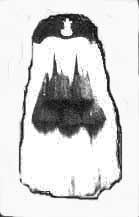
Seaforth Highlanders – Dark kilt with obvious light coloured over-stripes: there are also a red over-stripes but they seldom show in a black and white photo. In general two vertical over-stripes should be showing either side of the centre of the kilt apron. Dark glengarry with diced band. White sporran with two long black tails. The regimental badge is a stag's head with very obvious antlers.
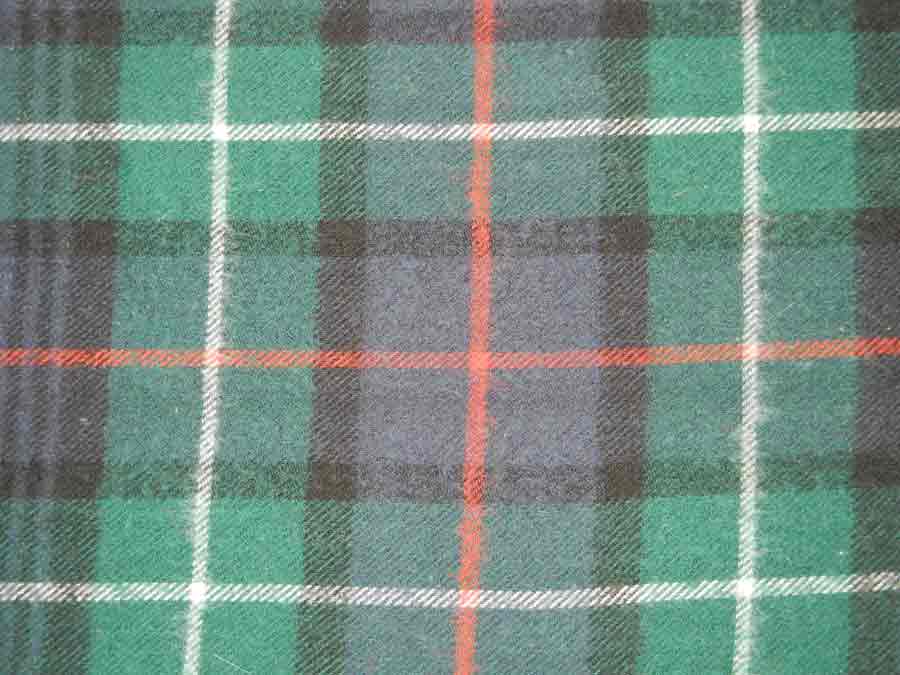

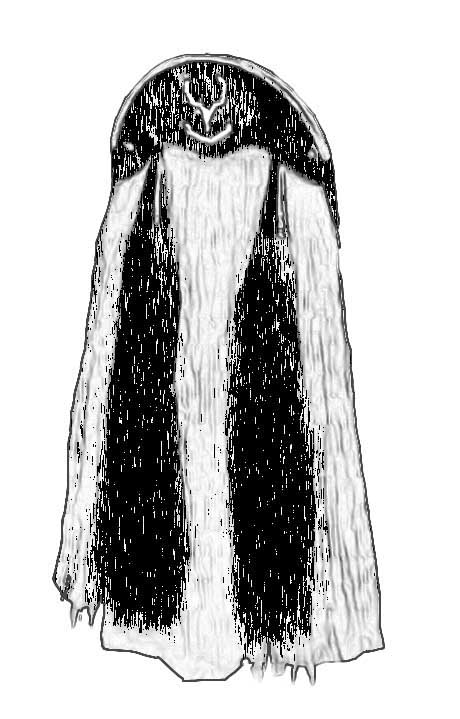
Argyll and Sutherland Highlanders – Plain kilt, no over-stripes. Dark glengarry with diced band. The sporran is black with six short black tassels. The collar badge on the tunic resembles two interlocking circles. The regimental badge is large and round. Before the creation of the Royal Regiment of Scotland, the Argylls' badge was the biggest in the British Army.



Reviews of Scottish Military Disasters
War is hell and the winning side is often the one which makes the fewest mistakes. The Scots are justly proud of their fighting men and women but mistakes have been made. Best-selling author Paul Cowan turns his attention to the disasters which have befallen Scotland’s soldiers over the centuries. His sharp eye for anecdotal detail, ranging from the gory to the humorous, help make this engaging account of military fiascos, catastrophes and blunders involving Scotland’s proud fighting men come alive for the general reader. Why should soldiers' stories only be told when they're on the winning side?
Extracts from some reviews of Scottish Military Disasters
"Author and war journalist Paul Cowan gives a pithy thumbnail sketch of each battle or incident (the longest episode is nine pages), and sets each event in the context of its time and also lists, where appropriate, its military or historical consequences. All in all, it is a cracking good read."
--Brian Townsend, The Courier
"[T]his pacy, lucidly written history is extremely readable and highly informative"
—Martin Tierney, The Herald
"A fascinating and highly recommended read."
—Ian Smith, Scots Magazine
The full reviews -
Scots Magazine
"Wha Killed The Braw Lads? - When Scottish soldiers ended up on the losing side.
"THERE is something unnerving about a screaming man charging head on at you with the sale intent of impaling you on a piece of sharpened steel." I'm in total agreement with that observation.
The steel in question is a bayonet, firmly clamped to the business end of a rifle barrel, but the key word is unnerving as countless troops in numerous battles have discovered for themselves. For the opposition it was time to turn and run and they always did, despite the fact that very few battlefield injuries were actually caused by bayonets. The sharpened length of steel was (and still is) a psychological weapon rather than a physical one.
This observation comes from journalist Paul Cowan in his paperback about Scottish regiments at war. But this is no elongated paean to the glory of our victorious lads surmounting the odds in various parts of the Empire and Europe. This work is very different, for its title is Scottish Military Disasters.
There were plenty of those - nearly 2000 years' worth, from Calgacus and his hordes losing out to the Roman legions at Mons Graupius right through to the fi rst Gulf War in 1991 and the needless deaths of three Highlanders at the hands of gung-ho US reservist pilots.
rst Gulf War in 1991 and the needless deaths of three Highlanders at the hands of gung-ho US reservist pilots.
The author doesn't mince his words when it comes to leadership, though the officers at regimental level come out fairly well. He reserves his true vitriol for the high-ups. I don't recall his use of the word "numptie", but you will know what I mean. High on the latter list must surely be Lt. General Aylmer Hunter-Weston, a Scotsman whom Cowan describes as the Clown Prince of the Gallipoli campaign. His incompetence cost the lives of hundreds of young Scots in the 8th Scottish Rifles, part of the 52nd Lowland Division's 156th Infantry Brigade.
Told of the slaughter, his unfeeling response was: "That will blood the pups." One of the pups was the author's great-grandfather.
History, of course, is full of "what ifs"? While not a military disaster in the accepted sense, the death of King Alexander III in 1286 when he rode over a cliff during a storm dramatically altered Scotland's history. Had he lived we might never have heard of Wallace or Bruce and Paul Cowan is right to include this.
He includes so much more that changes our view of great historical events. Remember that famous painting of the Gordon Highlanders hanging on to the Scots Greys' stirrups as they charged the French at Waterloo? Dramatic stuff, but who recalls that later in that same charge the overenthusiastic Greys were cut to pieces by French Cuirassiers, losing 100 dead and another 100 wounded out of their total strength of 350 troopers?
One of Scotland's greatest military disasters was Flodden in 1513. But what went wrong, especially as the Scots outnumbered the English army two to one? How did the Cameronians come by their name? And why is the White House painted white?
Lots of questions. Paul Cowan answers all of them and many more. A fascinating and highly recommended read.
Ian Smith
Online
We have 162 guests and no members online


